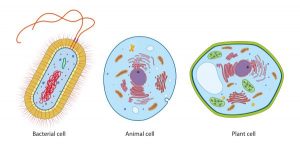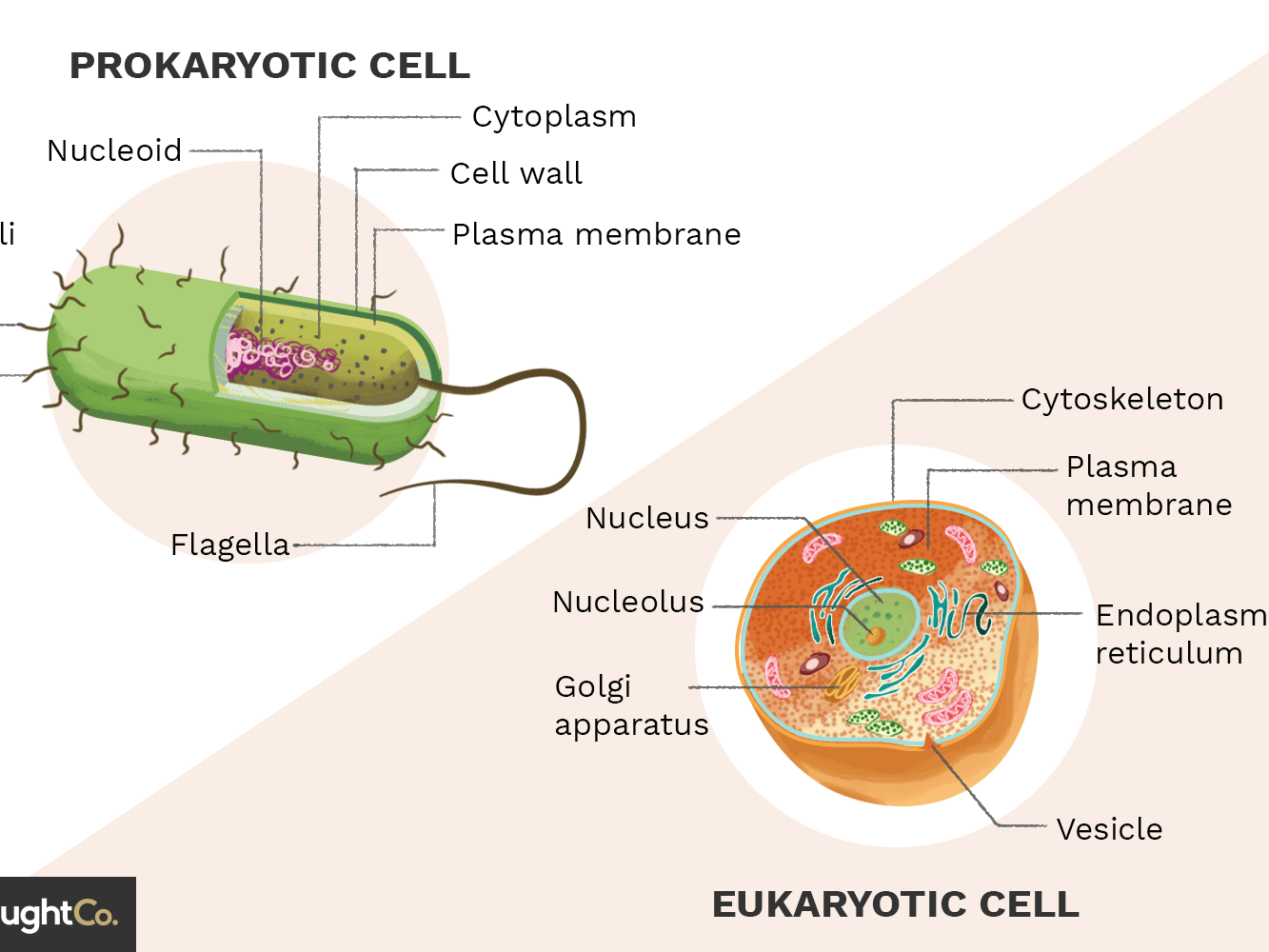Every living organism falls into one of two groups: eukaryotes or prokaryotes. The cell structure determines which group an organism belongs to. In this article, we will explain in detail what prokaryotes and eukaryotes are and describe the differences between the two.
Definition of prokaryote
Prokaryotes are single-celled organisms that lack membrane-bound structures, the most notable of which is the nucleus. Prokaryotic cells tend to be small, simple cells, measuring between 0.1 and 5 μm in diameter. Although prokaryotic cells do not have membrane-bound structures, they do have distinct cellular regions. In prokaryotic cells, the DNA is grouped in a region called the nucleoid.
Characteristics of prokaryotic cells
Here’s a breakdown of what you might find in a prokaryotic bacterial cell.
- Nucleoid: A central region of the cell that contains its DNA.
- Ribosome: Ribosomes are responsible for protein synthesis.
- Cell wall: The cell wall provides structure and protection from the outside environment. Most bacteria have a rigid cell wall made of carbohydrates and proteins called peptidoglycans.
- Cell membrane: Every prokaryote has a cell membrane, also known as the plasma membrane, which separates the cell from the outside environment.
- Capsule: Some bacteria have a layer of carbohydrates that surrounds the cell wall called a capsule. The capsule helps the bacteria stick to surfaces.
- Fimbriae: Fimbriae are thin hair-like structures that help with cell attachment.
- Pili: Pili are rod-shaped structures involved in multiple functions, including DNA binding and transfer.
- Flagella: Flagella are thin, tail-like structures that aid in movement.
Examples of prokaryotes
Bacteria and archaea are the two types of prokaryotes.
Do prokaryotes have mitochondria?
No, prokaryotes do not have mitochondria. Mitochondria are only found in eukaryotic cells. This is also true for other membrane-bound structures, such as the nucleus and the Golgi apparatus (more on this later). One theory of eukaryotic evolution hypothesizes that mitochondria were the first prokaryotic cells to live inside other cells. Over time, evolution led these separate organisms to function as a single organism in the form of a eukaryote.

Definition of eukaryote
Eukaryotes are organisms whose cells have a nucleus and other organelles enclosed by a plasma membrane. Organelles are internal structures responsible for a variety of functions, such as energy production and protein synthesis. Eukaryotic cells are large (around 10-100 μm) and complex. While most eukaryotes are multicellular organisms, there are some single-celled eukaryotes.
Characteristics of eukaryotic cells
Within a eukaryotic cell, each membrane-bound structure carries out specific cellular functions. Here is an overview of many of the major components of eukaryotic cells.
- Nucleus: The nucleus stores genetic information in the form of chromatin.
- Nucleolus: Found within the nucleus, the nucleolus is the part of eukaryotic cells where ribosomal RNA is produced.
- Plasma Membrane: The plasma membrane is a phospholipid bilayer that surrounds the entire cell and encompasses the internal organelles.
- Cytoskeleton or cell wall: The cytoskeleton or cell wall provides structure, allows for cell movement, and plays a role in cell division.
- Ribosomes: Ribosomes are responsible for protein synthesis.
- Mitochondria: Mitochondria, also known as the power plants of the cell, are responsible for energy production.
- Cytoplasm: The cytoplasm is the region of the cell between the nuclear envelope and the plasma membrane.
- Cytosol: Cytosol is a gel-like substance inside the cell that contains the organelles.
- Endoplasmic Reticulum: The endoplasmic reticulum is an organelle dedicated to protein maturation and transport.
- Vesicles and vacuoles: Vesicles and vacuoles are membrane-bound sacs that are involved in transport and storage.
Other common organelles found in many, but not all, eukaryotes include the Golgi apparatus, chloroplasts, and lysosomes.
Examples of eukaryotes
Animals, plants, fungi, algae, and protozoa are all eukaryotes.
Comparing Prokaryotes and Eukaryotes
All life on Earth consists of eukaryotic cells or prokaryotic cells. Prokaryotes were the first life form. Scientists believe that eukaryotes evolved from prokaryotes about 2.7 billion years ago. The main distinction between these two types of organisms is that eukaryotic cells have a membrane-bound nucleus and prokaryotic cells do not. The nucleus is where eukaryotes store their genetic information.
In prokaryotes, DNA is bundled in the nucleoid region but is not stored within a membrane-bound nucleus. The nucleus is just one of many membrane-bound organelles in eukaryotes. Prokaryotes, on the other hand, do not have membrane-bound organelles. Another important difference is the structure of DNA. The DNA of eukaryotes consists of multiple linear double-stranded DNA molecules, while that of prokaryotes is double-stranded and circular.
Key Similarities Between Prokaryotes and Eukaryotes
All cells, whether prokaryotic or eukaryotic, share these four characteristics:
1. DNA
2. Plasma membrane
3. Cytoplasm
4. Ribosomes
Transcription and Translation in Prokaryotes vs. Eukaryotes
In prokaryotic cells, transcription and translation are coupled, meaning that translation begins during mRNA synthesis. In eukaryotic cells, transcription and translation are not coupled. Transcription occurs in the nucleus, producing mRNA. The mRNA then leaves the nucleus and translation occurs in the cytoplasm of the cell.

